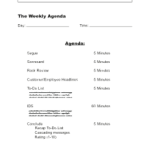

If the coronavirus pandemic has taught us anything, it’s that we weren’t prepared.
I’ve had clients tell me they didn’t have a pandemic disaster plan. They weren’t prepared to shut down their business for two months. They weren’t ready to furlough employees and figure out how to reopen safely.
Of course they weren’t. No one could have predicted this crisis. No one predicted 9/11, the 2008 recession, or any of the other crises our country has faced either. But they happened whether we were ready for them or not.
We can’t predict what crisis we will face next, but we can predict there will be one—and have a plan in place for the unknown.
Preparing for the unknown is not a new concept. The Boy Scouts of America has been touting “Be Prepared” since 1907, encouraging scouts to always be in a state of mind and body readiness to “do your duty.”
Pilots have their own procedure for being ready for the unknown, called the “Missed Approach.” We have a clear process for handling unexpected landing difficulties that includes applying full power, climbing to a specific altitude, communicating with air traffic control, entering a holding pattern and then planning next steps. We know this sequence by heart. Thankfully, we don’t need to enact this procedure often. But the best pilots expect they will have to—and stand ready to do so on every flight.
I’ve been advising my clients to prepare for their businesses’ “Missed Approach” by putting together a crisis preparation plan. The plan should address these three key areas:
#1: Financial soundness
Any crisis will result in a period of business disruption. Companies that had cash on hand fared better during this pandemic than those that didn’t. You can prepare for this now by looking at your financial picture and consider building up your cash reserve, securing a line of credit, managing your debt, or diversifying your revenue.
#2: Communication
Don’t go off the grid. Good, consistent communication to customers, employees and investors (if you have them) is key during a crisis. Your communication plan should include what you will communicate, how you will communicate, who will communicate, and how often. It’s important to be proactive and to build trust and confidence.
#3: Accountability
There’s not a more important time to understand “who does what” than during a crisis. Your Accountability Chart will help you with this. An Accountability Chart is more than an org chart—it clearly identifies the “seats” in your business and the three to seven responsibilities of those seats. When everyone understands their responsibilities (as well as everyone else’s), it builds a foundation of continuity, collaboration and trust that will push your business through the uncertainty.
No matter what crisis is looming in our future, a crisis preparation plan will get us ready for its outcome.
So I challenge you: When is the last time you looked critically at your business? Are you ready for your business’s next “Missed Approach”? While the details of the current crisis are still fresh in your mind, I encourage you to work with your team and create a crisis preparation plan. You won’t know why you will use it or when you will use it, but that won’t matter. Your business will be prepared for the next unknown.
What business challenges have you faced during this pandemic? What does your crisis preparation plan look like? Please share your thoughts in the comments below!












































11710 Plaza America Drive, Suite 2000 Reston, VA 20190
703.278.CORE (2673)
As usual my favorite pilot has excellent advice. Both if you’re having trouble landing and if an unexpected catastrophe strikes your business…and the world. And always be prepared.
Nice to hear from you Steve. You’re invited to join me in the cockpit any time!